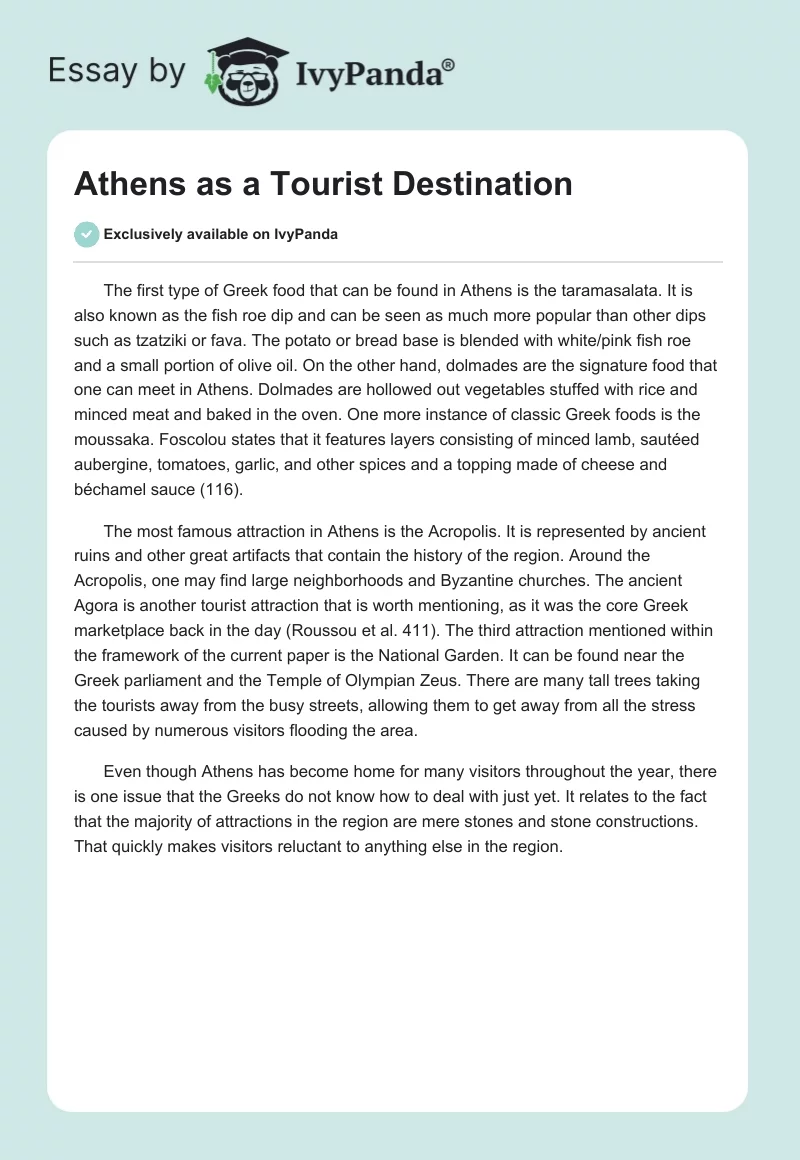The first type of Greek food that can be found in Athens is the taramasalata. It is also known as the fish roe dip and can be seen as much more popular than other dips such as tzatziki or fava. The potato or bread base is blended with white/pink fish roe and a small portion of olive oil. On the other hand, dolmades are the signature food that one can meet in Athens. Dolmades are hollowed out vegetables stuffed with rice and minced meat and baked in the oven. One more instance of classic Greek foods is the moussaka. Foscolou states that it features layers consisting of minced lamb, sautéed aubergine, tomatoes, garlic, and other spices and a topping made of cheese and béchamel sauce (116).
The most famous attraction in Athens is the Acropolis. It is represented by ancient ruins and other great artifacts that contain the history of the region. Around the Acropolis, one may find large neighborhoods and Byzantine churches. The ancient Agora is another tourist attraction that is worth mentioning, as it was the core Greek marketplace back in the day (Roussou et al. 411). The third attraction mentioned within the framework of the current paper is the National Garden. It can be found near the Greek parliament and the Temple of Olympian Zeus. There are many tall trees taking the tourists away from the busy streets, allowing them to get away from all the stress caused by numerous visitors flooding the area.
Even though Athens has become home for many visitors throughout the year, there is one issue that the Greeks do not know how to deal with just yet. It relates to the fact that the majority of attractions in the region are mere stones and stone constructions. That quickly makes visitors reluctant to anything else in the region.

